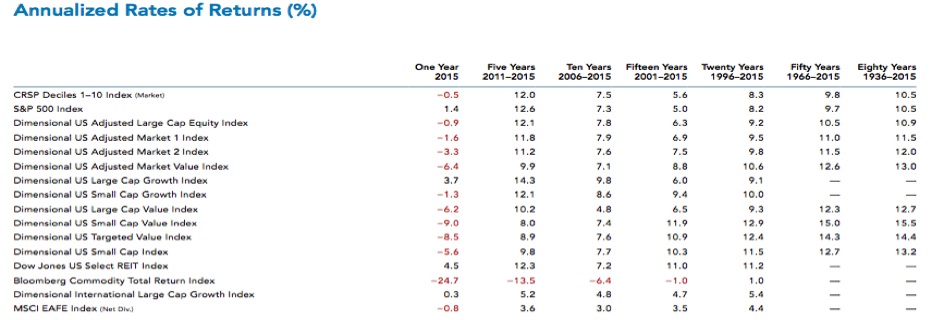What Rate of Return Can You Expect from Your Portfolio?
Your estimate can help you figure out what asset allocation best suits your risk tolerance and financial goals.

My last Kiplinger article introduced the latest book by Micahel J. Mauboussin, The Success Equation, in which he makes the argument that events in business, sports, investing and even life can be looked at as part skill and part luck. The trick is to figure out whether skill or luck has a larger impact in any particular activity.
The part of the book that interests me the most is the discussion of investing, and how it is an endeavor that involves a high degree of luck. So much so, in fact, that the influence of events outside of our control (luck) can overshadow skill, good processes and past strings of either good or bad results.
In such a situation, the author recommends following checklists and ensuring that a solid, repeatable process is followed. Before we can even begin to consider evaluating investments for implementation, we have to establish our goals.
From just $107.88 $24.99 for Kiplinger Personal Finance
Become a smarter, better informed investor. Subscribe from just $107.88 $24.99, plus get up to 4 Special Issues

Sign up for Kiplinger’s Free Newsletters
Profit and prosper with the best of expert advice on investing, taxes, retirement, personal finance and more - straight to your e-mail.
Profit and prosper with the best of expert advice - straight to your e-mail.
How do we do that? I propose the following procedure:
1. Determine the appropriate allocation (or diversification strategy) for your portfolio. My firm does this by evaluating a client's sensitivity to volatility (risk tolerance), using a state of the art tool called Riskalyze.
2. After getting a feel for your risk tolerance, consider other aspects of your life, such as career stability, stage of life (growth years, retirement, distribution, etc.), financial situation in terms of emergency funds, savings, debt, need to pay for education, etc. Then, make a determination about what your expected return needs to be. Should it be 6%, 8%, 11%?
3. A rate of return can be backfitted into your portfolio by using the latest estimates of what different asset classes have returned over a period of time, as well as inflation expectations and other factors.
To give you an idea of how subjective this is, and how a qualified fiduciary adviser can earn his or her keep, here's an excerpt from Dimensional Fund Advisors latest "Matrix Book," an invaluable resource for making informed decisions of this type:

As a back-of-the envelope estimate, let's go with the most recent 20 years and the following basic asset classes:
U.S. Stocks – S&P 500: 8.2%
International – MSCI EAFE: 4.4%
U.S. Small Cap – Dimensional US Small Cap Index: 11.5%
Bonds – Barclays US Aggregate Bond Index: 5.3%
Your expected return is going to equal the sum of the returns of each of the above benchmarks multiplied by its expected weight in your portfolio. For example, let's say your risk tolerance score recommends you build a balanced portfolio of 60% stocks and 40% bonds. Also, let's say that you've decided that 10% of the portfolio should be in small company stocks and 10% in international. Your expected overall return should be: 8.2% x 0.4 + 4.4% x 0.1 + 11.5% x 0.1 + 5.3% x 0.4 = 6.99%. That's before inflation, money management fees, etc.
Now we have a decision point. Is 6.99% appropriate for you? Or do you need more of a return? A case can be made that if you are in the growth stage of your career and income, the entire portfolio should be weighted toward large and small domestic stocks, which should significantly impact your returns (and also the volatility of the portfolio). Realize too, that there are many other asset classes we can consider&mdsah;emerging market stocks, different classifications such as growth, value, or blend, mid-cap stocks, commodities, real estate, "smart beta", etc. These may add incremental returns to our portfolio, depending on the type of asset.
If you're happy with the return expectations using only indexes and benchmarks to guide you, a passive indexing approach may suit your needs just fine. You will minimize one component of portfolio drag—expenses, as most index funds and exchange-traded funds will have overall expense ratios of 0.5% or less.
Whatever your needs, this process can help you make better decisions when choosing mutual funds and ETFs. You can even crunch your own numbers, using the Portfolio Expected Returns Calculator I've created.
Doug Kinsey is a partner in Artifex Financial Group, a fee-only financial planning and investment management firm based in Dayton, Ohio.
Profit and prosper with the best of Kiplinger's advice on investing, taxes, retirement, personal finance and much more. Delivered daily. Enter your email in the box and click Sign Me Up.

Doug Kinsey is a partner in Artifex Financial Group, a fee-only financial planning and investment management firm in Dayton, Ohio. Doug has over 25 years experience in financial services, and has been a CFP® certificant since 1999. Additionally, he holds the Accredited Investment Fiduciary (AIF®) certification as well as Certified Investment Management Analyst. He received his undergraduate degree from The Ohio State University and his Master's in Management from Harvard University.
-
 Nasdaq Sinks 418 Points as Tech Chills: Stock Market Today
Nasdaq Sinks 418 Points as Tech Chills: Stock Market TodayInvestors, traders and speculators are growing cooler to the AI revolution as winter approaches.
-
 23 Last-Minute Gifts That Still Arrive Before Christmas
23 Last-Minute Gifts That Still Arrive Before ChristmasScrambling to cross those last few names off your list? Here are 23 last-minute gifts that you can still get in time for Christmas.
-
 The Rule of Compounding: Why Time Is an Investor's Best Friend
The Rule of Compounding: Why Time Is an Investor's Best FriendDescribed as both a "miracle" and a "wonder," compound interest is simply a function of time.
-
 If You're a U.S. Retiree Living in Portugal, Your Tax Plan Needs a Post-NHR Strategy ASAP
If You're a U.S. Retiree Living in Portugal, Your Tax Plan Needs a Post-NHR Strategy ASAPWhen your 10-year Non-Habitual Resident tax break ends, you could see your tax rate soar. Take steps to plan for this change well before the NHR window closes.
-
 Could Target-Date Funds With Built-In Income Guarantees Be the Next Evolution in Retirement Planning?
Could Target-Date Funds With Built-In Income Guarantees Be the Next Evolution in Retirement Planning?With target-date funds falling short on income certainty, retirement plans should integrate guaranteed income solutions. Here is what participants can do.
-
 Your Year-End Tax and Estate Planning Review Just Got Urgent
Your Year-End Tax and Estate Planning Review Just Got UrgentChanging tax rules and falling interest rates mean financial planning is more important than ever as 2025 ends. There's still time to make these five key moves.
-
 Past Performance Is Not Indicative of Your Financial Adviser's Expertise
Past Performance Is Not Indicative of Your Financial Adviser's ExpertiseMany people find a financial adviser by searching online or asking for referrals from friends or family. This can actually end up costing you big-time.
-
 I'm a Financial Planner: If You're Not Doing Roth Conversions, You Need to Read This
I'm a Financial Planner: If You're Not Doing Roth Conversions, You Need to Read ThisRoth conversions and other Roth strategies can be complex, but don't dismiss these tax planning tools outright. They could really work for you and your heirs.
-
 Could Traditional Retirement Expectations Be Killing Us? A Retirement Psychologist Makes the Case
Could Traditional Retirement Expectations Be Killing Us? A Retirement Psychologist Makes the CaseA retirement psychologist makes the case: A fulfilling retirement begins with a blueprint for living, rather than simply the accumulation of a large nest egg.
-
 I'm a Financial Adviser: This Is How You Can Adapt to Social Security Uncertainty
I'm a Financial Adviser: This Is How You Can Adapt to Social Security UncertaintyRather than letting the unknowns make you anxious, focus on building a flexible income strategy that can adapt to possible future Social Security changes.
-
 I'm a Financial Planner for Millionaires: Here's How to Give Your Kids Cash Gifts Without Triggering IRS Paperwork
I'm a Financial Planner for Millionaires: Here's How to Give Your Kids Cash Gifts Without Triggering IRS PaperworkMost people can gift large sums without paying tax or filing a return, especially by structuring gifts across two tax years or splitting gifts with a spouse.